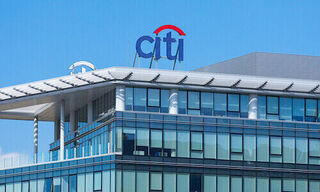Allianz Global Investors have released their 2016 market outlook, the main highlights are:
- Strong US dollar and a likely Fed rate hike in December is to normalise, not tighten monetary policy thus will not lead to successive rate hike in 2016
- Asian risk markets will be supported by accommodative policies as real interest rates remain high
- High domestic leverage will see Asia to deliver lower economic growth over the next few years
- China’s service sector rose to power under reform; favours insurance, environment and natural gas, consumer discretionary and property sectors
- Prefers asset classes to hunt for income: High yields and equities
Global growth is still slowing and low returns are expected in 2016, despite no recession foreseen in the developed markets, according to Allianz Global Investors (“AllianzGI”). While the market anticipates a potential interest rate hike before Christmas on the back of positive macro data from the US in recent months, as the US embarks on a divergent monetary policy compared with its global peers, AllianzGI expects the strong US dollar to burden the US economic growth and corporate earnings.
Strong US dollar and a likely Fed rate hike in December is to normalise, not tighten monetary policy thus will not lead to successive rate hike in 2016 Asian risk markets will be supported by accommodative policies as real interest rates remain high High domestic leverage will see Asia to deliver lower economic growth over the next few years China’s service sector rose to power under reform; favours insurance, environment and natural gas, consumer discretionary and property sectors Prefers asset classes to hunt for income: High yields and equities
Compared to the US, the European capital market appears to be in a better position, well-propped by the falling commodity prices and an extended quantitative easing programme. With the European earnings cycle gaining momentum, AllianzGI is hopeful towards income stocks with solid fundamentals. In Japan, despite the economy has shown little signs of recovery, Japanese equities continue to be supported by strengthened focus on shareholders’ return and improving profitability in the corporate sector.
Looking at Asia, AllianzGI believes 2016 will witness greater impacts of the financial market reforms, some of which are starting to bear fruits in addressing the prolonged structural economic slowdown of the region. While high domestic leverage is likely to burden economic growth over the next few years, accommodative monetary policies expected in countries including China, India and Indonesia may be able to stabilise growth, creating buy-in opportunities for assets with attractive valuations.
Raymond Chan, Chief Investment Officer, Equity Asia Pacific at AllianzGI says, “Amid increasing volatility and slowing global growth, Asia is still investors’ hunting ground for yields and returns. Although China worries have taken Asian markets on a roller-coaster ride this year, we see a significant difference between what we are facing currently and the previous crisis back in 1997. In fact, taking the lesson from the Asian Financial Crisis, most of the Asian countries now have much stronger current account balances and FX reserves, providing greater buffer for market volatility.” 2
China is seen as one of the most turbulent markets in 2015, marked by intensified reformatory measures that aim for long-term, structural transformation. “What China is heading towards, is gradual economic growth slowdown, not a collapse or a hard-landing.” comments Raymond Chan. “We expect growth from China continue to be driven primarily by the service sector rather than the manufacturing industry. China’s reform is slowly taking effect. It is shifting its economic force to consumer goods, creating positive catalysts for the insurance, environment & natural gas, consumer discretionary, and property sectors.”
Raymond Chan adds, “As China continues to open up under financial market reforms, we are seeing more catalysts for the market. The inclusion of China’s American Depositary Receipts (ADRs) into MSCI Emerging Markets Index marks a significant step for the ultimate A-shares’ inclusion into the index, enabling global investors to enjoy the China growth story in a more holistic manner. On the other hand, we believe that RMB liberalisation will also pump up the chance of yuan to be included into the IMF’s Special Drawing Rights (SDR) basket. All these reforms and developments show positive signs for the long-term prospect of the Chinese market, and are likely to attract fund inflows in a healthy manner when they are materialised.
Commenting on the possible impact of Fed rate hike towards the bond market, David Tan, Chief Investment Officer, Fixed Income Asia Pacific at AllianzGI says, “Compared with other emerging markets, Asia sees higher growth prospects and lower default rates. Asian bond yields on average are still higher relative to those in the developed markets. With the recent correction in Asian currencies, Asian fixed income valuations have become more attractive especially on a total return basis. This is likely to attract more investor flows.” For Asian credit, “we continue to favour the High Yield sector on a selective basis, the higher spread also buffers any rise in yields on the back of normalisation of US interest rates.” David Tan adds.




















